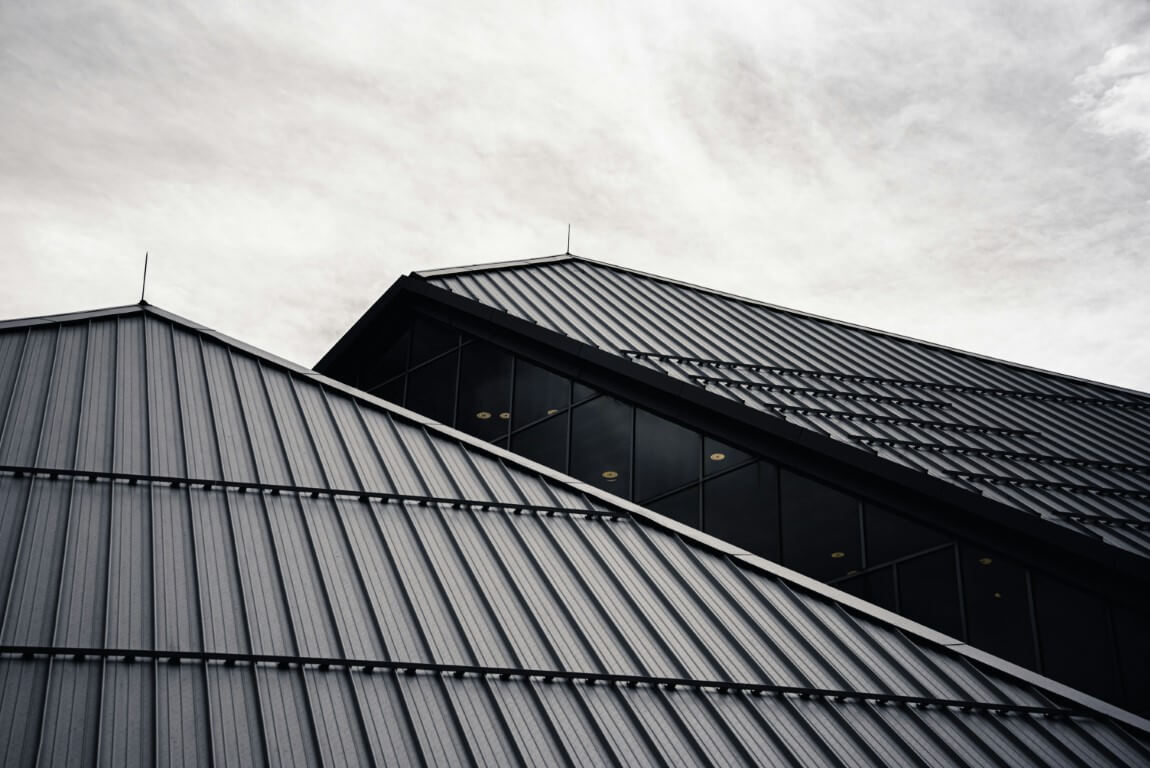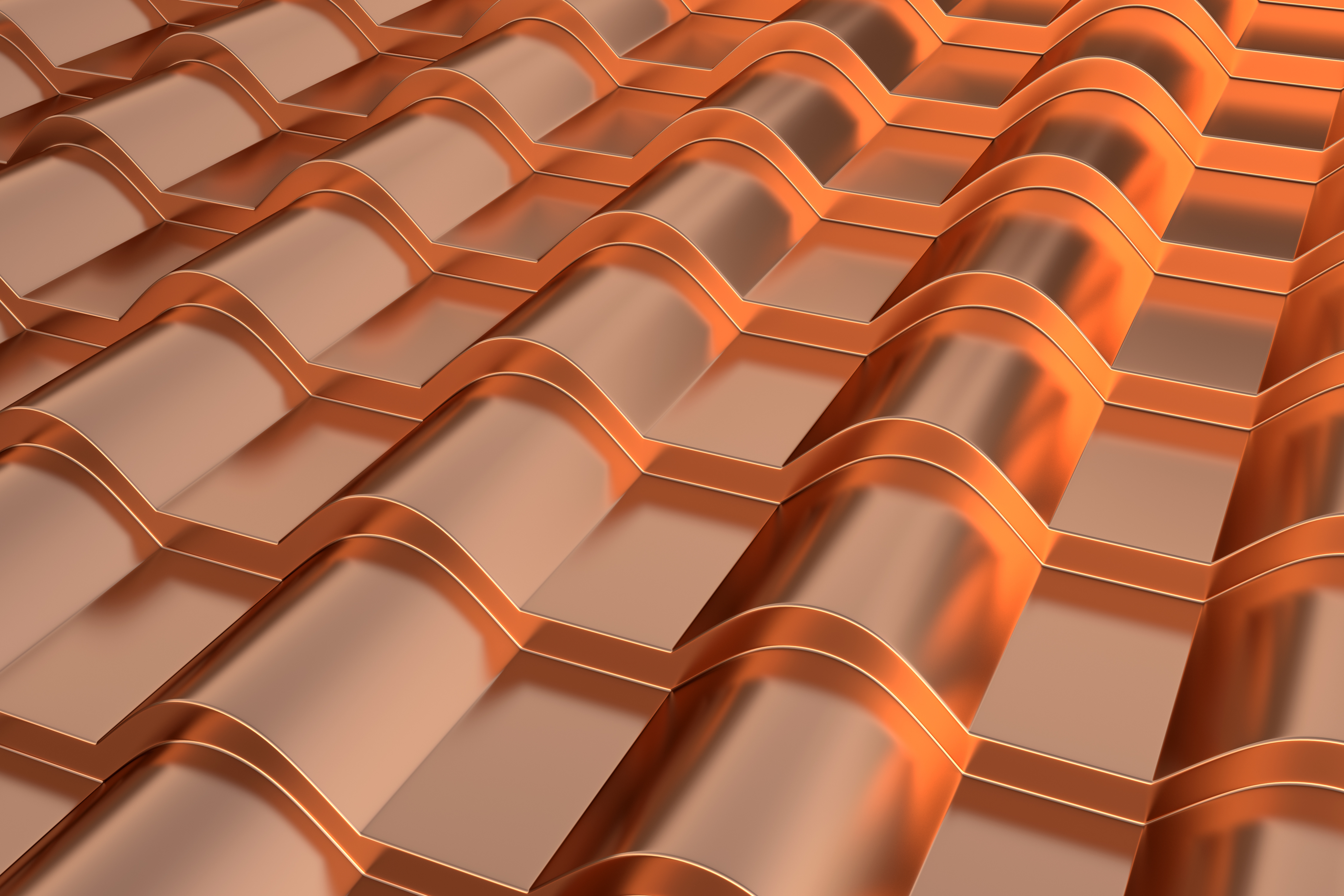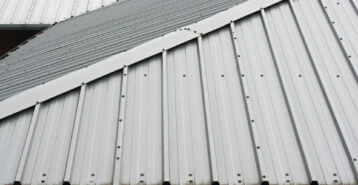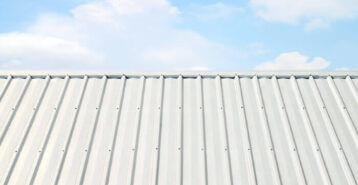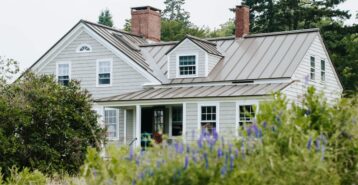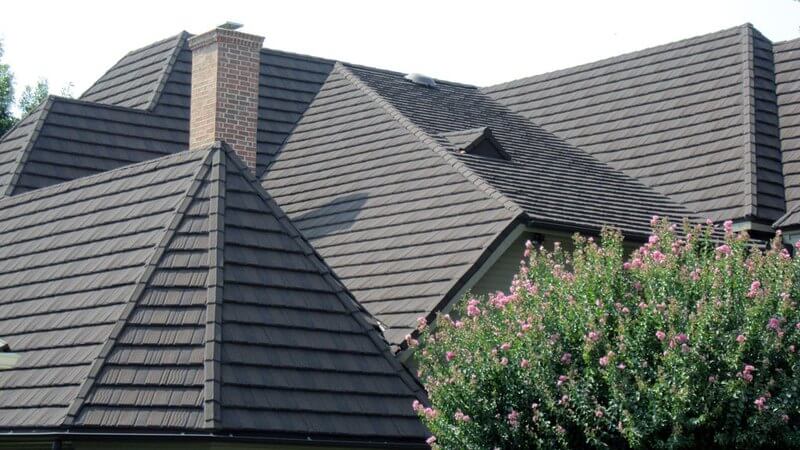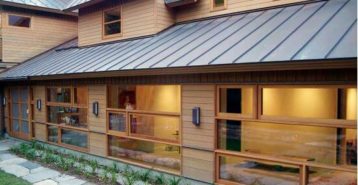Tin Roofs: An Overview
If someone today says they have a tin roof, chances are they’re either mistaken, living under a very old roof, or using “tin” as a catch-all term for metal roofing. It’s kind of like how people still call modern aluminum or steel containers “tin cans.” True tin roofs aren’t common anymore; they tend to dent and rust easily, and their lifespan doesn’t hold up against other metal options. The cost of tin roofs is also significantly higher than materials like steel or aluminum. That’s why most contractors and manufacturers have moved on to more durable, modern materials.
How Much Does a Tin Roof Cost?
The average cost for installing a tin roof — including materials and labor — ranges from $10 to $18 per square foot. This range is based mostly on the type of tin roof and how complex the installation is. For a 3,000-square-foot roof with a moderate pitch, the total cost typically falls between $30,000 and $54,000.
Types of Tin Roofs With Prices
Tin roofs come in a few different styles, each with distinct aesthetic and structural characteristics that influence their cost, durability, and lifespan.
Corrugated Tin Roofs 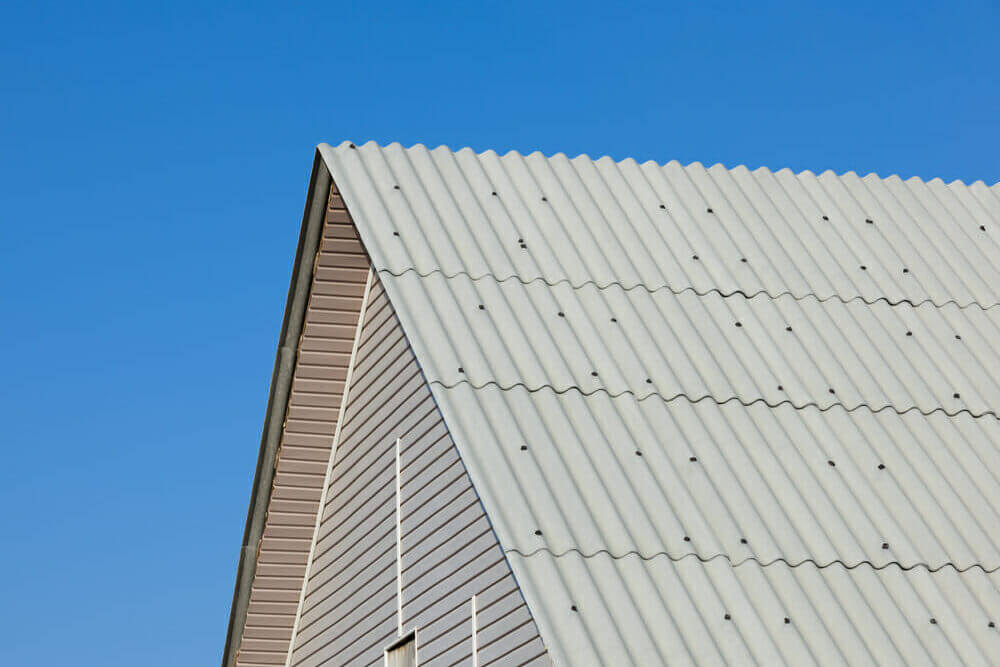
Corrugated tin roofs are recognizable by their wave-like pattern and are generally the most cost-effective option. The average cost to install a corrugated tin roof is $10 to $14.40 per square foot, or $25,000 to $36,000 for a 2,500-square-foot roof.
These roofs are budget-friendly due to their simple design and easy installation. They’re strong and handle rain and snow well. With regular maintenance, they typically last about 30 to 45 years.
Standing Seam Tin Roofs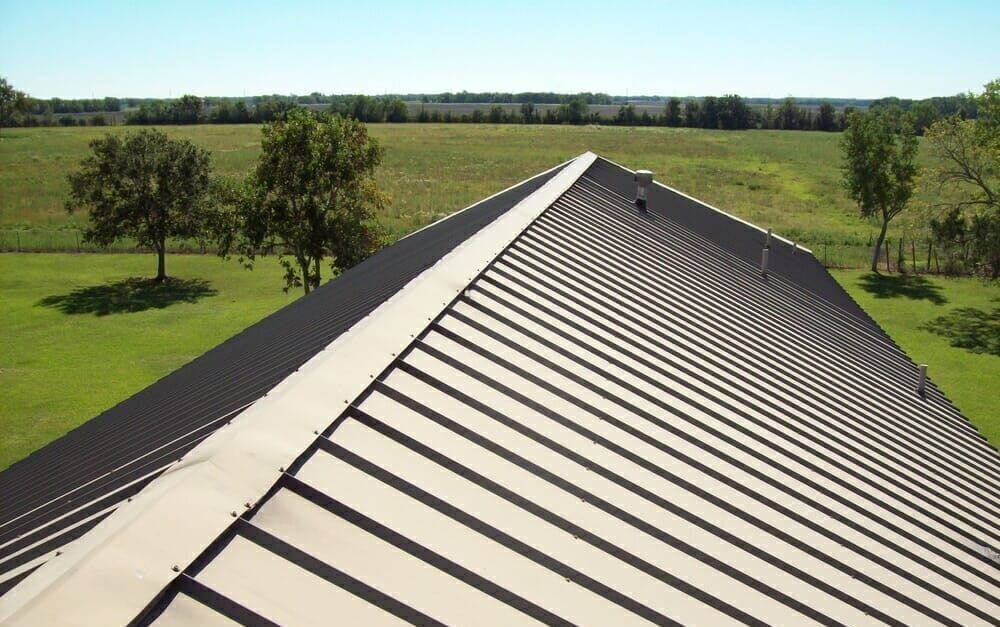
Standing seam roofs are higher-end and feature long, flat panels joined by raised seams and hidden clips. The average cost to install a standing seam tin roof is $13 to $18 per square foot, or $32,500 to $45,000 for a 2,500-square-foot roof.
The extra cost covers the skilled labor and added design appeal. Raised seams improve leak resistance and make these roofs more durable. With proper care, they can last more than 50 years.
Tin Shingle Roofs 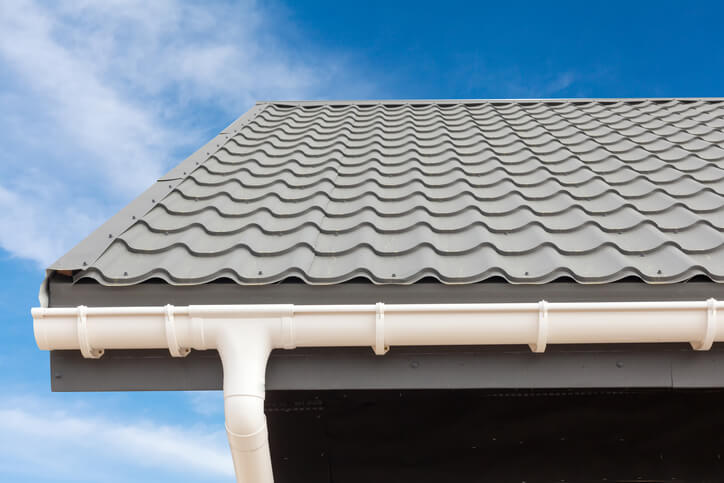
Tin shingle roofs mimic the look of traditional shingles and are also considered a premium option. The average cost to install a tin shingle roof is $11.20 to $16.80 per square foot, or $28,000 to $42,000 for a 2,500-square-foot roof.
These shingles offer a classic aesthetic with the durability of metal. When maintained properly, they can last 50 to 60 years and offer excellent weather and fire resistance.
Factors that Impact Installation Costs
Several factors influence the total cost of installing a tin roof:
- Material Quality: Higher-quality tin is more expensive but offers better durability and longevity.
- Roof Size and Design: Larger and more complex roof designs require more materials and labor, increasing the overall cost.
- Geographic Location: Labor costs can vary significantly depending on the region.
- Additional Features: Enhancements like coatings for extra UV protection or improved aesthetics can also add to the cost.
Tin vs Aluminum Roof Cost
When comparing tin roofs to aluminum roofs, the costs are fairly competitive. Aluminum roofing typically ranges from $7 to $17 per square foot, including materials and labor, while tin roofing typically costs $10 to $18 per square foot. The choice between the two often comes down to specific performance features like weight, where aluminum is lighter.
Tin vs Steel Roof Cost
Steel roofing is another popular metal roofing option, generally costing between $4 and $21 per square foot. Tin roofs often cost slightly more due to their aesthetic appeal and durability. However, the choice between tin and steel often depends on environmental considerations and visual preferences.
Benefits and Downsides
Installing tin roofing is a larger investment than a standard asphalt roof. However, homeowners should consider the fact that the life of a tin roof is decades longer than many other roofing material types, and that it can add value to your home.
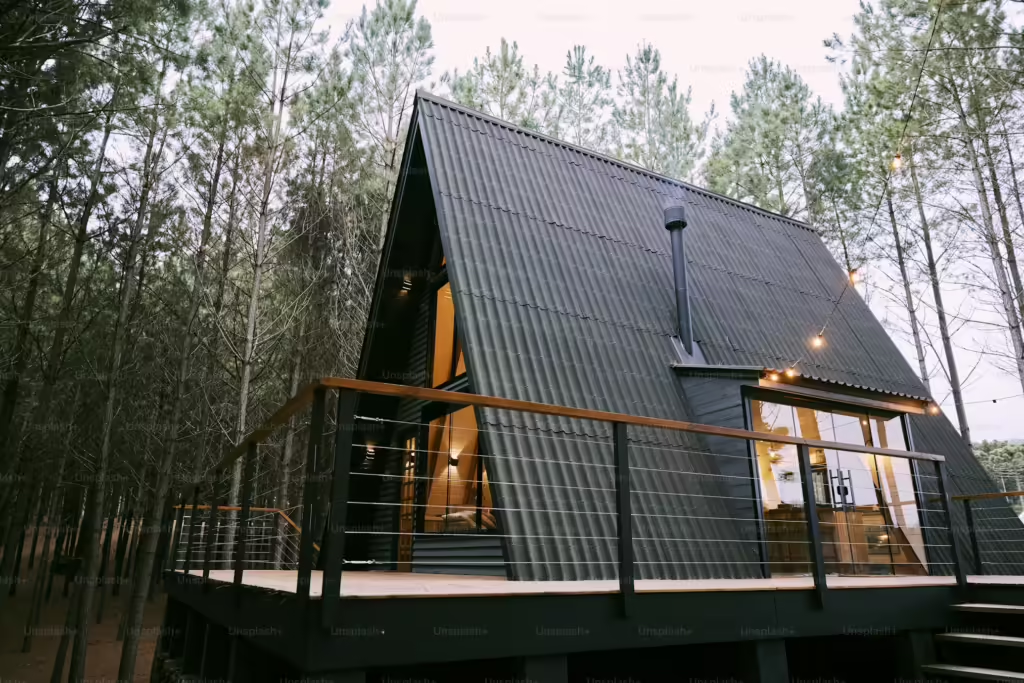
Many homeowners researching a new metal roof have concerns about the potential for rust, noise from rain and wind, and denting, but modern engineering has addressed all these concerns. You do have to properly insulate your attic to prevent your roof from creating too much noise, but this is sound advice regardless of the type of roof you choose to install. Additionally, with most textured roofs, minor denting (if it occurs) is not easily visible.
Finally, some believe that metal roofing will increase your likelihood of a lightning strike. While metal does conduct electricity, electricity is not drawn to it. In fact, because metal roofing is fire-resistant, if your home is struck by lightning, your risk of fire is actually decreased.
The Bottom Line
Tin roofing, while once a popular choice for homeowners, is now less common. Modern metal roofs, made out of materials like steel, aluminum, and copper, outperform tin in many aspects.
Modernize recommends getting quotes from three to four local roofing contractors to find the best price. Be sure to ask your contractor about their experience with installing these roofs and also get their opinion on whether a tin roof is the best material for your home.
We can help connect you with up to four licensed roofing pros near you. Ready to get started? Click below.
FAQ: Tin Roofs
What is the average cost of a tin roof?
The average cost to install a tin roof ranges from $10 to $18 per square foot, including materials and labor. For a 3,000-square-foot home, total installation typically costs between $30,000 and $54,000, depending on the style and complexity of the roof.
Is there a difference between a metal roof and a tin roof?
Yes, there is a difference. “Metal roof” is a broad term that includes materials like aluminum, steel, copper, and zinc. Tin roofs are much less common today and typically refer to steel coated with tin or terne. Most modern metal roofs are not made of pure tin.
What are the cons of a tin roof?
The main drawbacks of tin roofs include:
- Higher upfront cost compared to asphalt
- Potential denting from hail or falling debris
- Noise during heavy rain or wind if not properly insulated
- Rust risk without proper coatings
Despite these downsides, modern “tin” roofs are engineered for improved performance and can last 40 to 60+ years with maintenance.
Do they make tin roofs any more?
True tin roofs are rare today. While the term “tin roof” is still used, most are actually made from steel coated with tin or other metals. Modern metal roofs are more commonly built with materials like aluminum or galvanized steel, which offer better durability and performance.
